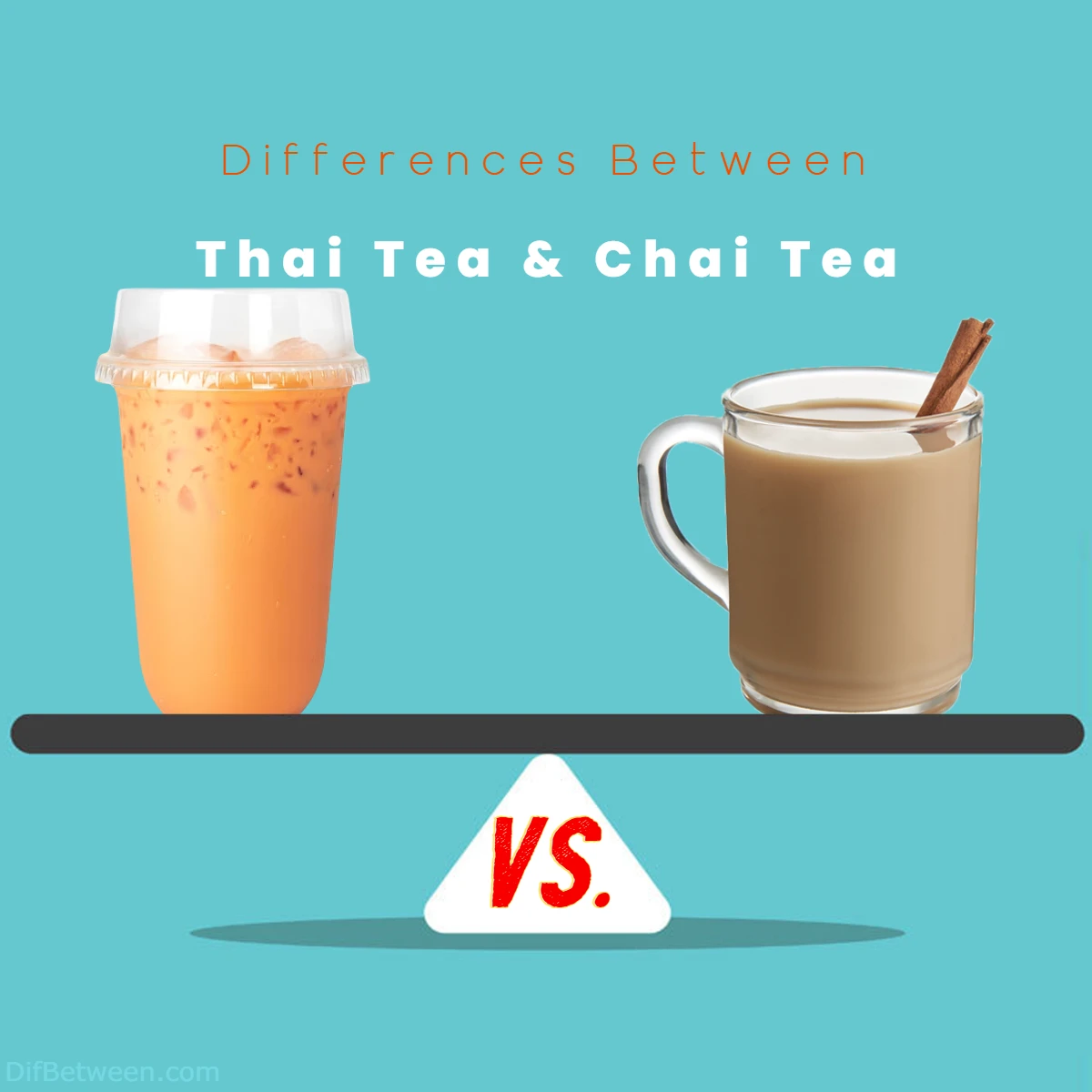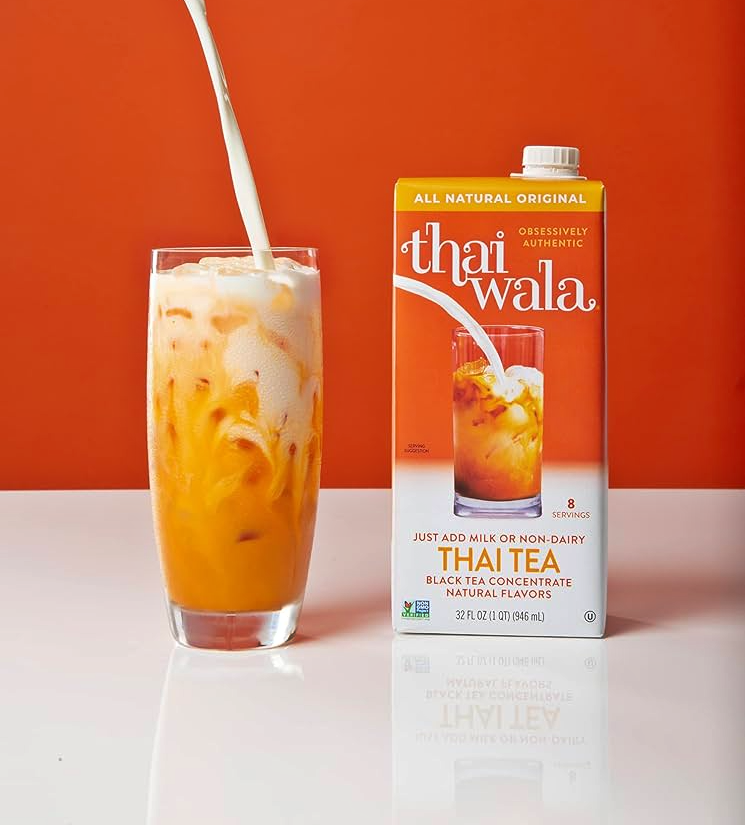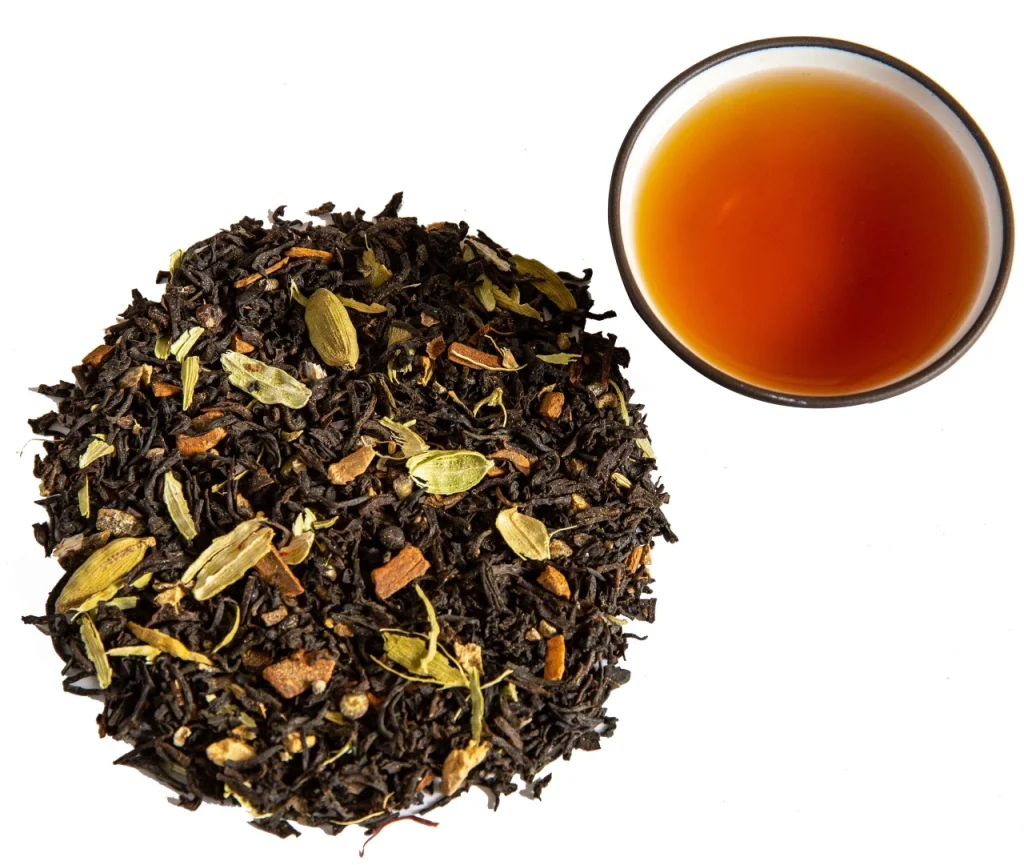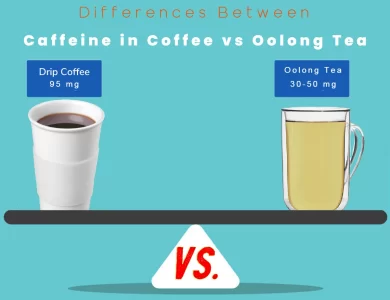
The main difference between Thai tea and Chai tea lies in their origin, preparation, and flavor profiles. Thai tea, hails from Thailand and is typically a sweet, creamy, and vibrant orange tea made from strongly brewed black tea, sweetened condensed milk, and spices. On the other hand, Chai tea originates from India and is a spiced tea made with black tea, milk, and a blend of aromatic spices like cardamom, cinnamon, ginger, cloves, and black pepper.
| Aspect | Thai Tea | Chai Tea |
|---|---|---|
| Origin | Originated in Thailand. | Originated in India. |
| Cultural Significance | Symbol of Thai hospitality and warmth. | Integral part of Indian culture and social gatherings. |
| Flavor Profile | Creamy, sweet, and slightly bitter. | Aromatic, spicy, and comforting. |
| Key Ingredients | Ceylon tea, condensed milk, sugar, and sometimes food coloring. | Black tea, spices (cardamom, cinnamon, ginger, cloves, black pepper), milk, and sweeteners. |
| Preparation Method | Brewed tea mixed with sweeteners and condensed milk, served over ice. | Boiled with milk and spices, sweetened to taste, and served hot. |
| Caffeine Content (per 8 oz) | Approximately 20-60 mg. | Approximately 30-70 mg. |
| Serving Style | Traditionally served cold over ice. | Typically served hot. |
| Health Benefits | Contains antioxidants from tea leaves, but may be high in sugar and calories. | Contains spices with potential health benefits and antioxidants from black tea. |
| Tea Additions and Variations | Thai iced tea with boba, Thai tea latte, coconut Thai tea, Thai tea with lemon. | Masala chai, decaffeinated chai, green chai, chai with almond milk, dirty chai. |
| Regional Influences | Popular in Southeast Asia and beyond. | Adapted and enjoyed globally, with variations based on regions. |
| Cultural Significance | Symbol of Thai hospitality and warmth. | Integral part of Indian culture and social gatherings. |
| Global Popularity | Gaining popularity beyond Thailand. | Widely popular and accessible worldwide. |
As you read on, you’ll be immersed in the world of Thai tea and Chai tea, witnessing their cultural significance and regional influences. Whether you’re curious about the caffeine content, intrigued by the health benefits, or eager to explore the endless variations, we’ve got it all covered! So, grab your favorite tea cup, settle in with your comfiest spot, and prepare to be enchanted by the allure of Thai tea and Chai tea. Join us as we sip our way through the flavors and traditions that make these teas so cherished around the globe. Read to the end of our blog, and you’ll discover the perfect tea match for your taste buds. Let’s dive in and celebrate the art of tea together!
Differences Between Thai tea and Chai tea
Origins and Cultural Significance
Thai Tea:
Originating from Thailand, Thai tea, also known as “Cha Yen” in Thai, is a beloved traditional beverage with a vibrant history. The drink’s roots can be traced back to the 20th century when Thailand’s government sought to reduce the consumption of Chinese tea and promote the consumption of Thai-grown tea leaves. Thus, Thai tea was born. It quickly became a symbol of Thai hospitality and is now an essential part of the country’s culinary culture.
In Thailand, Thai tea is often served with a touch of theatrical flair – its vivid orange hue is achieved by adding food coloring, and it’s traditionally poured from a height to create a frothy layer on top. The concoction is sweetened with condensed milk or sugar, providing a rich and indulgent flavor.

Chai Tea:
Chai tea, on the other hand, has ancient origins rooted in Indian culture. The word “chai” simply means “tea” in Hindi, reflecting the quintessential role of tea in Indian society. While the precise origin of chai tea is shrouded in history, it is believed to have been consumed for thousands of years, tracing back to the ancient practice of Ayurveda.
Chai tea is deeply ingrained in Indian traditions and is often prepared by boiling black tea leaves with spices, milk, and sweeteners. The exact spice blend can vary from region to region and household to household, but common spices include cardamom, cinnamon, ginger, cloves, and black pepper. Chai tea is not just a beverage; it’s an integral part of social gatherings and a symbol of warmth, hospitality, and friendship.

Ingredients and Flavor Profiles
Thai Tea:
The hallmark of Thai tea lies in its distinct flavor profile. The key ingredients in Thai tea include:
- Ceylon Tea: Originally, Thai tea was made using locally grown Ceylon tea leaves, which lend a unique base flavor to the beverage.
- Condensed Milk: To achieve its signature creaminess and sweetness, Thai tea is combined with condensed milk or evaporated milk.
- Sugar: Thai tea is typically on the sweeter side, and sugar is often added to enhance its overall taste.
- Food Coloring: While not essential, Thai tea often incorporates food coloring, giving it that iconic orange appearance.
The result is a luscious and creamy drink with a strong tea taste complemented by the velvety texture of condensed milk and the delightful sugary notes. It strikes a beautiful balance between sweet and slightly bitter.
Chai Tea:
Chai tea, as mentioned earlier, is characterized by its aromatic blend of spices combined with black tea. The main ingredients of chai tea include:
- Black Tea: Assam tea is commonly used as a base, known for its robust and malty flavor. However, other black teas can also be used.
- Spices: The spice blend in chai tea can vary, but it typically includes cardamom, cinnamon, ginger, cloves, and black pepper. Sometimes, additional spices like fennel, star anise, or nutmeg may be added.
- Milk: Chai tea is almost always prepared with milk, which adds a creamy and comforting dimension to the beverage.
- Sweetener: To balance the spiciness, chai tea is sweetened with sugar or other sweeteners like honey.
The result is a fragrant and spicy tea with a delightful balance of heat from the spices, creaminess from the milk, and a comforting touch of sweetness. Each sip offers a sensory journey through the exotic flavors of India.
Preparation Methods
Thai Tea:
Preparing Thai tea is a straightforward process, making it accessible to both tea connoisseurs and those new to the experience. Here’s a basic outline of the preparation method:
- Brewing the Tea: Strong Ceylon tea is steeped in hot water, creating a concentrated base for the Thai tea.
- Adding Sweetener: Sugar is added to the freshly brewed tea to achieve the desired sweetness. Some variations may use other sweeteners like condensed milk directly at this stage.
- Cooling and Serving: After the tea is sweetened, it is allowed to cool before serving. It is traditionally poured over a glass filled with ice, and sometimes the iced tea is blended to create a frothy layer on top.
- Garnishing: To enhance the presentation and flavor, Thai tea is sometimes topped with a splash of condensed milk or a sprinkle of ground spices like star anise or cinnamon.
Chai Tea:
Chai tea preparation is more intricate and varies depending on regional and personal preferences. Here’s a general outline of the traditional method:
- Boiling Water and Milk: Water is brought to a boil in a pot, and then black tea leaves are added and simmered with milk. The ratio of water to milk and the type of milk used can differ.
- Adding Spices: A blend of spices, including cardamom, cinnamon, ginger, cloves, and black pepper, is added to the boiling mixture, infusing the tea with their flavors.
- Sweetening: Once the flavors of the spices have infused the tea, sweeteners like sugar or honey are added to the desired level of sweetness.
- Straining and Serving: The chai tea is then strained to remove the tea leaves and spices, leaving a smooth, aromatic beverage. It’s poured into cups or small glasses and served hot.
Caffeine Content
When it comes to caffeine, both Thai tea and Chai tea contain some level of it, primarily because they both utilize black tea leaves. However, the exact caffeine content can vary based on factors like the tea-to-water ratio, steeping time, and the type of tea leaves used. As a general rule, Chai tea might have a slightly higher caffeine content due to its preparation with a higher proportion of tea leaves and spices, compared to Thai tea.
Let’s take a look at a rough estimation of the caffeine content for both teas:
| Tea Type | Caffeine Content (per 8 oz) |
|---|---|
| Thai Tea | Approximately 20-60 mg |
| Chai Tea | Approximately 30-70 mg |
Remember that these figures are approximate and can vary based on various factors. Caffeine sensitivity varies among individuals, so it’s essential to gauge your own response to these teas to determine the best time to enjoy them.
Serving Styles
Thai Tea:
In Thailand, Thai tea is often served cold as a refreshing iced beverage, especially in the hot tropical climate. Street vendors and cafes throughout the country offer this colorful drink, allowing locals and visitors alike to savor its delightful taste and texture while beating the heat. The visual appeal of Thai tea, with its vibrant orange hue and contrasting creamy layer, makes it a popular choice for those seeking an Instagram-worthy beverage.
Thai tea can also be enjoyed warm, especially in countries with cooler climates or during the winter season. However, it’s more commonly associated with the iced variant.
Chai Tea:
Chai tea is typically served hot and is the go-to comfort beverage in Indian households. It is a common sight at street stalls, train stations, and tea shops across India, where chaiwallahs (tea vendors) skillfully prepare and serve the aromatic brew to locals and travelers alike. The warmth of chai tea makes it particularly comforting during cold weather or when seeking a moment of relaxation.
While hot chai is the classic choice, some places may offer iced or cold variants of chai tea, catering to varying preferences and climates.
Health Benefits
Thai Tea:
As much as we love the delightful taste of Thai tea, it’s important to recognize that it tends to be higher in sugar and calories due to the addition of condensed milk and sweeteners. Excessive consumption of sweetened Thai tea may not be suitable for individuals looking to reduce their sugar intake or manage their calorie intake.
On the positive side, Thai tea does contain antioxidants from the tea leaves, which can offer potential health benefits. However, these health benefits might be overshadowed by the added sugars and calories.
Chai Tea:
Chai tea, when prepared without excessive added sugars, can offer some health benefits. The spices used in chai, such as ginger, cardamom, and cinnamon, have been associated with various health-promoting properties. For instance:
- Ginger: Known for its anti-inflammatory properties and potential digestive benefits.
- Cardamom: May help with digestion and is a source of antioxidants.
- Cinnamon: May help regulate blood sugar levels and has antioxidant properties.
Additionally, black tea itself contains antioxidants called polyphenols, which can contribute to overall health.
Tea Additions and Variations
Thai Tea:
While traditional Thai tea is prepared with Ceylon tea, condensed milk, sugar, and sometimes food coloring, there are variations and additions that cater to different tastes and preferences. Some popular Thai tea variations include:
- Thai Iced Tea with Boba: This modern twist combines the creamy goodness of Thai tea with chewy boba pearls, creating a delightful textural experience.
- Thai Tea Latte: For those who prefer a smoother and less sweetened version, a Thai tea latte can be made by steaming milk and blending it with brewed Thai tea.
- Coconut Thai Tea: This exotic variation substitutes regular milk with coconut milk, infusing the tea with a tropical essence.
- Thai Tea with Lemon: A tangy twist on traditional Thai tea, adding a splash of fresh lemon juice to the mix.
Chai Tea:
Chai tea, with its versatile spice blend, offers a myriad of delightful variations that cater to diverse taste preferences. Some popular chai tea variations include:
- Masala Chai: The most classic and common version of chai, infused with a blend of traditional Indian spices.
- Decaffeinated Chai: For those looking to enjoy the flavors of chai without the caffeine, decaffeinated black tea can be used as a base.
- Green Chai: A lighter and more delicate version of chai, prepared with green tea leaves instead of black tea, offering a milder flavor profile.
- Chai with Almond Milk: A dairy-free alternative to traditional chai, using almond milk for a creamy texture and nutty flavor.
- Dirty Chai: A delightful combination of chai tea and espresso, perfect for those who crave the boldness of coffee with the spiciness of chai.
Regional Influences and Adaptations
Thai Tea:
Thai tea’s popularity has transcended its borders, becoming a beloved beverage in various countries across Southeast Asia and beyond. In other regions, it may be known by different names, such as “Thai Milk Tea” or “Thai Iced Tea.” Each place might add its own twist to the classic Thai tea, adapting it to local tastes and preferences.
While Thai tea is traditionally served cold with ice, in some regions, it might be enjoyed hot, especially during cooler months. The sweetness level may also vary, catering to the varying palates of different cultures.
Chai Tea:
Chai tea’s aromatic blend of spices has inspired numerous adaptations around the world, each reflecting the cultural influences and local ingredients of the region. In India itself, chai varies from state to state, with regional spice blends and preparation methods unique to each area.
Outside of India, chai tea has become popular in the global tea community, leading to creative blends and fusions. Chai-inspired desserts, snacks, and even alcoholic beverages have been crafted, demonstrating the versatility and allure of this beloved tea.
Cultural Significance and Rituals
Thai Tea:
In Thailand, Thai tea is not only a popular beverage but also holds cultural significance. It is often offered as a symbol of hospitality and warmth when welcoming guests into homes or establishments. The preparation and serving of Thai tea can be considered an art form, with vendors and cafes taking pride in their presentation and flair.
During festive occasions and celebrations, Thai tea is often shared among friends and family, fostering a sense of togetherness and camaraderie.
Chai Tea:
In India, chai is deeply woven into the social fabric of everyday life. It is a common sight to see people gathering around tea stalls, engaging in conversation, and building connections over a shared cup of chai.
Chai is also an integral part of Indian hospitality, and guests are often welcomed with a freshly prepared cup. Additionally, chai has found its way into spiritual and religious practices, with tea offerings being made to deities during ceremonies.
Global Popularity and Availability
Thai Tea:
Thai tea has gained substantial popularity outside of Thailand, particularly in Southeast Asia, the United States, and parts of Europe. It can be found in various cafes, restaurants, and specialty tea shops that focus on Thai cuisine or offer an array of global tea selections.
While not as widespread as some other tea varieties, its unique flavor and striking appearance have piqued the curiosity of tea enthusiasts around the world.
Chai Tea:
Chai tea, with its rich history and alluring spice blend, has transcended borders to become a global favorite. It can be found in nearly every corner of the world, from Indian chai stalls to high-end cafes in cosmopolitan cities.
Packaged chai tea blends, both loose leaf and tea bags, are readily available in supermarkets and specialty stores, making it accessible to tea lovers everywhere. Additionally, chai tea lattes and variations have found their place on the menus of major coffeehouse chains, adding to its widespread recognition.

Thai tea or Chai tea: Which One is for You?
Thai tea and Chai tea are both delightful beverages with their own unique charms. Let’s take a moment to explore which one might be your perfect cuppa.
Choose Thai Tea If:
- You Love Creamy and Sweet Treats: Thai tea’s luscious creaminess, thanks to condensed milk, makes it a delightful indulgence for those with a sweet tooth.
- Vibrant and Instagrammable Delights: If you enjoy beverages with eye-catching colors and a touch of flair, Thai tea’s striking orange hue and frothy layer make it an Instagram-worthy choice.
- A Refreshing Thirst Quencher: Thai tea’s popularity as a refreshing iced beverage makes it a go-to choice, especially in warm climates or during hot summer days.
- You’re Curious About Thai Culture: Trying Thai tea is a delicious way to experience a part of Thai culture, as it holds a significant place in their hospitality and social gatherings.
Choose Chai Tea If:
- You Crave Aromatic Spice Blends: Chai tea’s warm and fragrant spice blend, with notes of cardamom, cinnamon, and ginger, offers a comforting and aromatic experience with every sip.
- A Taste of Indian Tradition: If you appreciate cultural rituals and enjoy embracing flavors from around the world, chai tea is a beautiful representation of Indian tea culture.
- Cozy and Comforting Moments: Chai tea’s soothing warmth makes it an ideal choice for cozying up with a good book or enjoying quiet moments of relaxation.
- Versatility and Adaptability: With a variety of chai tea blends and adaptations available, you can explore different spice combinations and even try chai-infused desserts and snacks.
Remember, You Can Enjoy Both!
There’s no need to pick just one! Embrace the diversity of the tea world and try both Thai tea and Chai tea to discover your personal favorite. Whether you prefer the creamy sweetness of Thai tea or the aromatic spices of Chai tea, both beverages offer a delightful journey for your taste buds.
So, why not embark on a flavorful adventure and savor the best of both worlds? Enjoy your tea time, and may each cup bring you joy, relaxation, and a deeper connection to the rich tapestry of global tea culture!
FAQs
Thai tea, also known as “Cha Yen,” is a traditional Thai beverage originating from Thailand. It is a creamy and sweet tea made using Ceylon tea, condensed milk, sugar, and sometimes food coloring. In contrast, Chai tea is an Indian classic made by blending black tea with spices such as cardamom, cinnamon, ginger, cloves, and black pepper. It is often prepared with milk and sweetened to taste, resulting in a flavorful and aromatic brew.
Both Thai tea and Chai tea offer potential health benefits. Thai tea contains antioxidants from the tea leaves, but its sweetness may contribute to higher calorie and sugar intake. On the other hand, Chai tea’s spices, like ginger and cardamom, have been linked to anti-inflammatory properties and digestive benefits. The antioxidants in black tea used in Chai can also contribute to overall health. However, the overall health impact may depend on the amount consumed and the addition of sweeteners.
Chai tea generally contains slightly more caffeine than Thai tea. The caffeine content can vary based on factors like the tea-to-water ratio and steeping time. On average, an 8 oz serving of Thai tea contains approximately 20-60 mg of caffeine, while Chai tea contains approximately 30-70 mg.
Thai tea is traditionally served cold over ice, often with a frothy layer on top. It’s a popular iced beverage, especially in Thailand’s warm climate. On the other hand, Chai tea is traditionally served hot. It is a comforting and cozy beverage, perfect for cold weather or relaxation.
Absolutely! There’s no need to choose between Thai tea and Chai tea. Both teas offer unique flavor experiences and cultural significance. Feel free to explore and savor both beverages, and discover the one that suits your taste preferences and occasions best.
Yes, there are various variations of both Thai tea and Chai tea. For Thai tea, you can try a Thai iced tea with boba, a Thai tea latte, or a coconut Thai tea for a tropical twist. For Chai tea, explore masala chai, decaffeinated chai, green chai, or even a dirty chai, which combines chai with espresso.
Yes, both Thai tea and Chai tea have gained popularity beyond their countries of origin. Thai tea is commonly found in cafes and restaurants specializing in Thai cuisine or global tea selections. Chai tea, being a globally loved favorite, is readily available in tea shops, coffeehouses, and supermarkets worldwide.
Thai tea is a symbol of Thai hospitality and warmth, often shared during social gatherings and celebrations. Chai tea is deeply ingrained in Indian culture and plays a role in social interactions, offering a sense of comfort and connection.
Read More:






